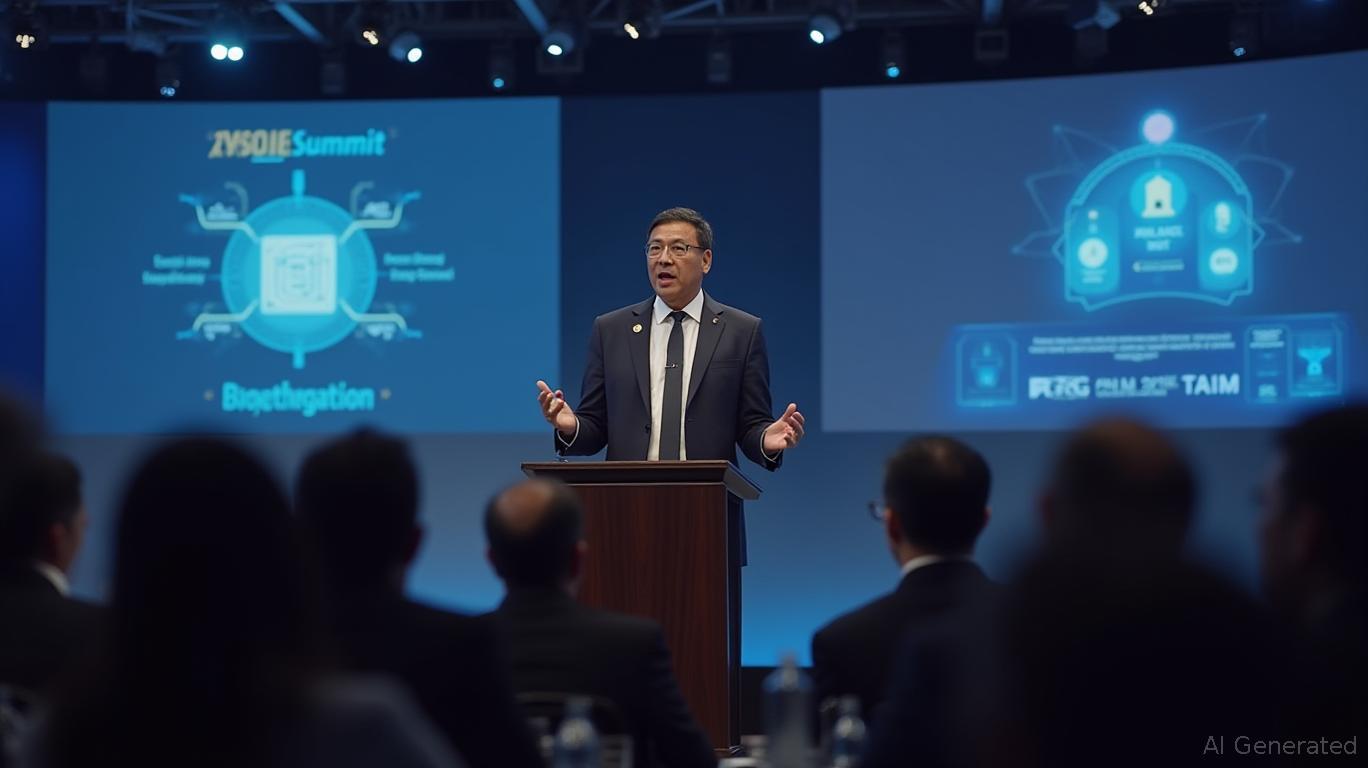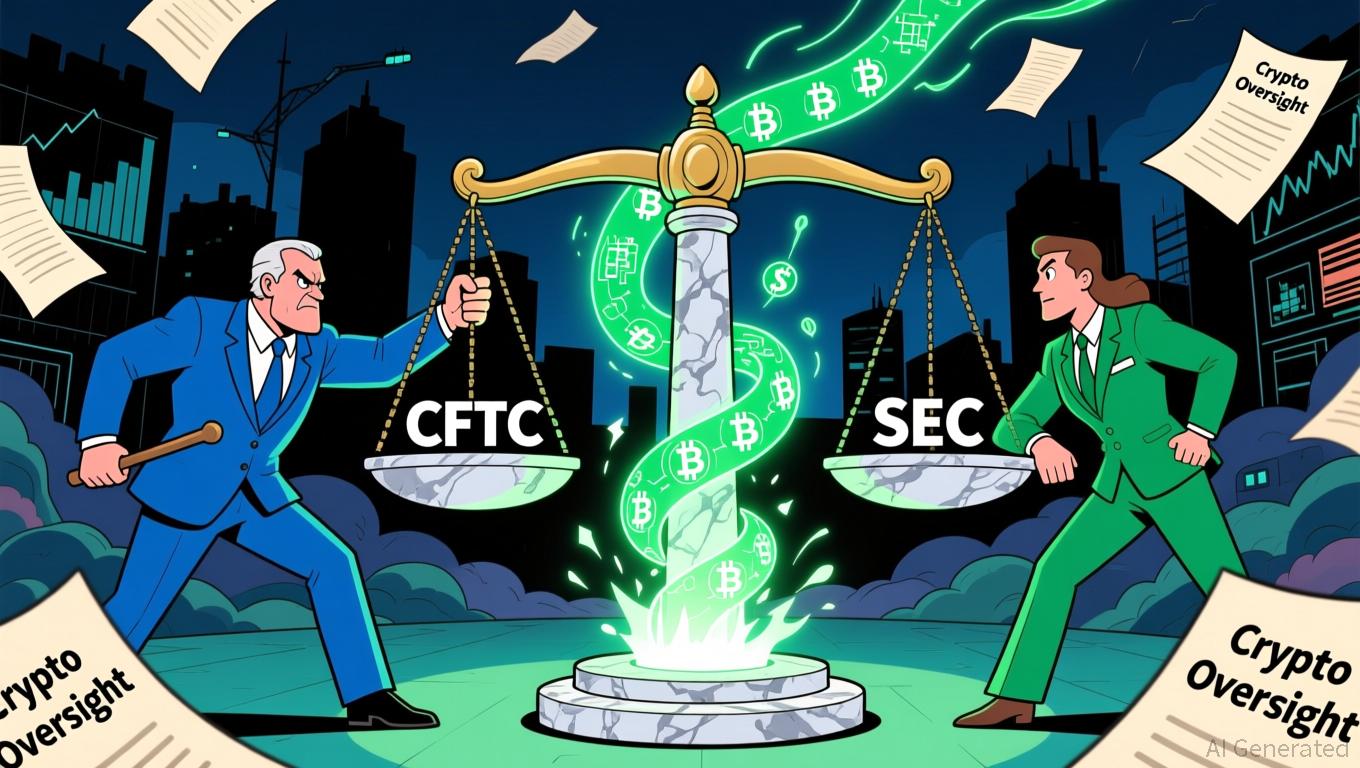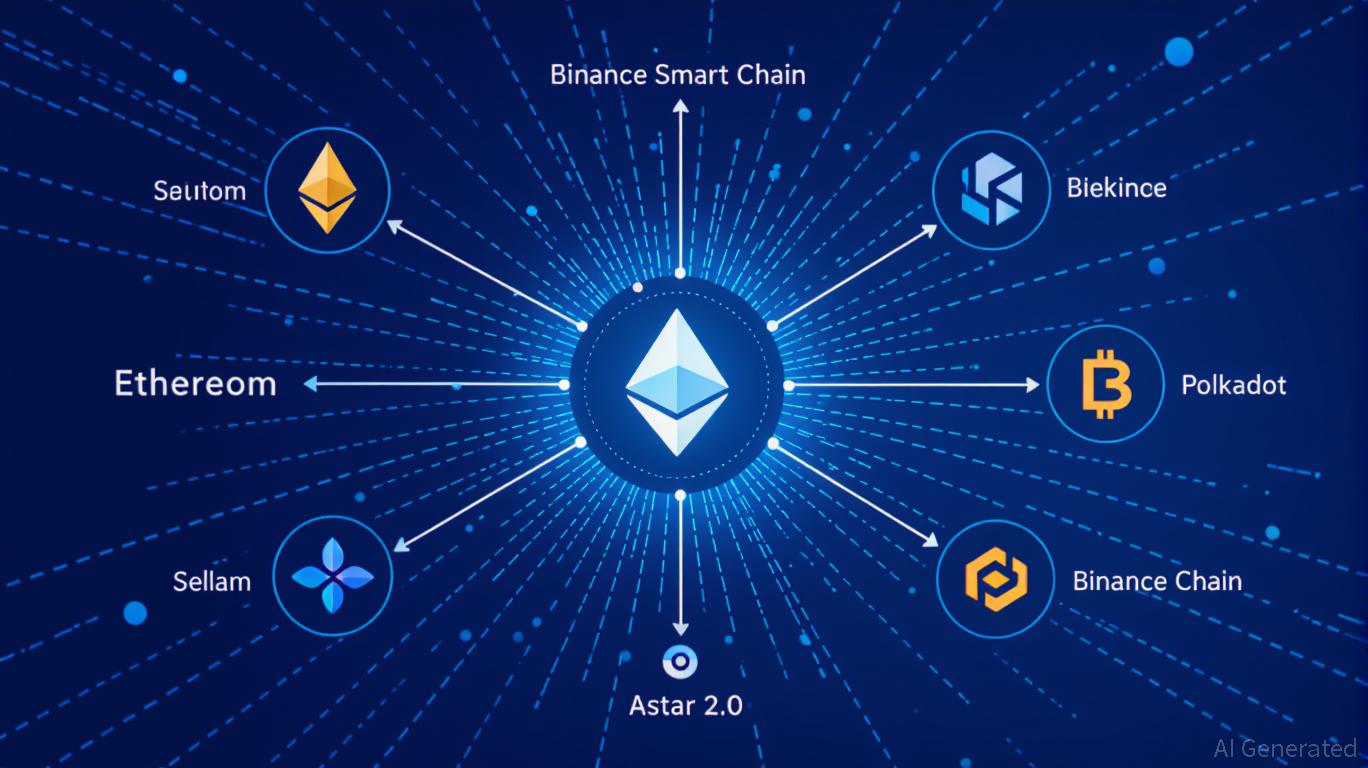India Strikes a Balance Between Crypto Oversight and AI-Powered Progress at Blockchain Summit
- India Blockchain Month 2025 in New Delhi focused on Web3 innovation, regulatory dialogue, and AI integration, uniting 250+ partners including Web3 communities and media. - Regulatory discussions highlighted India's revised crypto framework, including 1% TDS rules and VDA token classifications, alongside RBI's Blockchain Sandbox 2.0 for compliant DeFi pilots. - AI adoption in India reached 30% in 2025, driven by government initiatives like AIforAll and Digital India, with blockchain-AI convergence emphasi

India Blockchain Month (INBM) 2025, hosted in New Delhi from September 25 to 26, has established itself as a major platform for advancing Web3 technologies, regulatory discussions, and the integration of artificial intelligence. Organized by BlockOn Ventures and Web3preneur, this two-day event brought together more than 250 partners, including over 100 Web3 communities and 100 media organizations, to strengthen India’s role in the worldwide digital asset sector. Coinciding with ETHGlobal Delhi Week, the summit became a focal point for developers, regulators, and investors to tackle pressing issues and opportunities in blockchain and AI.
A highlight of INBM 2025 was the “Regulatory Roundtable,” where industry experts and government officials gathered to examine the country’s shifting crypto regulations. The talks reflected recent policy changes, such as the updated 1% Tax Deducted at Source (TDS) regulation, which now offers a ₹50,000 yearly exemption for smaller investors, and the categorization of
The summit also showcased India’s rapid adoption of AI, which climbed to 30% in 2025—outpacing the global average of 26%. This surge is fueled by government programs like NITI Aayog’s AIforAll initiative and the Digital India campaign, both of which emphasize integrating AI into sectors such as healthcare, education, and urban development. According to the BCG 2025 Global AI Adoption Report, India’s private sector is at the forefront of applying AI to practical scenarios. At INBM, the intersection of AI and blockchain was a recurring topic, with presenters highlighting how decentralized systems can strengthen data ownership and trust in AI-powered solutions.
Keynote speakers from the industry stressed the importance of clear regulations. Dilip Chenoy, Chairman of the Bharat Web3 Association, called for a regulatory approach that encourages innovation to draw international investment and expertise. Raj Kapoor from the India Blockchain Alliance also emphasized the need to balance regulation with adaptability to ensure innovation isn’t hindered. The roundtable further discussed the upcoming Digital Asset Basic Act, which is expected to establish a thorough legal framework for crypto assets in 2025.
Beyond regulatory matters, the summit addressed the tokenization of Real-World Assets (RWAs). With India’s robust digital infrastructure—demonstrated by UPI’s 4.5 billion monthly transactions—serving as a backbone for Web3 growth, participants explored how blockchain could transform asset management in industries like real estate and supply chains. The focus on community-led innovation highlighted India’s distinctive environment, where grassroots initiatives and institutional backing work hand in hand.
India Blockchain Month 2025 wrapped up with a strong appeal for all stakeholders to work together in crafting a regulatory landscape that matches India’s tech aspirations. As the nation navigates the convergence of AI, blockchain, and policy, the event underscored India’s potential to lead in decentralized technology. With more than 250 partners and a shared vision for the country’s digital progress, INBM 2025 laid the groundwork for ongoing advancement in the Web3 and AI arenas.
Disclaimer: The content of this article solely reflects the author's opinion and does not represent the platform in any capacity. This article is not intended to serve as a reference for making investment decisions.
You may also like
Bitcoin News Update: CFTC's Broader Role in Crypto Regulation Ignites Discussion on Clearer Rules
- U.S. lawmakers propose expanding CFTC's crypto oversight via a bill reclassifying spot trading, diverging from SEC's enforcement approach. - Harvard University invests $443M in BlackRock's IBIT ETF, reflecting institutional confidence in crypto as a legitimate asset class. - DeFi projects like Mutuum Finance raise $18.7M in presales, leveraging regulatory momentum and transparent on-chain credit systems. - RockToken's infrastructure-backed crypto contracts attract long-term investors with structured yiel

DASH Aster DEX's Latest On-Chain Growth and What It Means for DeFi Liquidity
- DASH Aster DEX leads 2025 DeFi shift with hybrid AMM-CEX model and multi-chain support (BNB, Ethereum , Solana), boosting TVL to $1.399B and Q3 daily trading volumes of $27.7B. - Platform's 1,650% ASTER token price surge post-TGE attracted 330,000 new wallets, with 94% of BSC-USD volume ($2B/day) driving institutional adoption via Binance/YZi partnerships. - ASTER token mechanics enable 80% margin trading, 5-7% staking rewards, and governance rights, while annual 5-7% fee burns create scarcity and align

Astar 2.0: Leading a New Generation of DeFi and Cross-Chain Advancements
- Astar 2.0 introduces a zkEVM mainnet and cross-chain interoperability, slashing gas fees and enabling 150,000 TPS with 2025 scalability goals. - Strategic partnerships with Mazda, Japan Airlines, and Sony demonstrate blockchain's real-world applications in logistics, loyalty programs, and digital asset tokenization. - Q3 2025 data shows $2.38M DeFi TVL growth and 20% active wallet increase, alongside a $3.16M institutional ASTR token acquisition. - The platform aims to solidify its role as a foundational

Aster DEX Introduces New On-Ramp: Transforming Retail Participation in DeFi
- Aster DEX integrates institutional-grade custody and privacy tech (zero-knowledge proofs) to bridge retail-institutional DeFi gaps via BNB Chain partnerships. - TVL surged to $2.18B by late 2025 through yield-bearing stablecoins and hidden orders, attracting both retail and institutional liquidity. - Despite compliance gaps and wash trading concerns, Aster's Binance alignment and Coinbase listing signals growing institutional validation.
